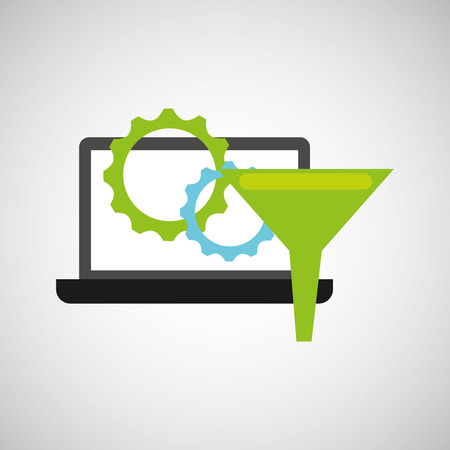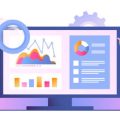Understanding Website Load Time
When we talk about website load time, were referring to how fast a webpage loads when someone visits it. In the world of SEO and user experience, speed matters—a lot. A slow website can turn visitors away and negatively impact your rankings on Google. But what exactly is “load time,” and how do we measure it?
What Is Website Load Time?
Website load time is the total amount of time it takes for a web page to fully display on a users browser after they click on a link or enter a URL. This might sound straightforward, but there are actually several different ways to measure this process.
Key Loading Metrics
Google and other performance tools break down load time into specific metrics that each focus on a different part of the loading process. Here are some of the most important ones:
| Metric | Description | Why It Matters |
|---|---|---|
| TTFB (Time to First Byte) | The time it takes for the browser to receive the first byte of data from the server. | A slow TTFB usually means server issues or backend delays, which affect overall speed. |
| FCP (First Contentful Paint) | The time it takes for the first piece of content (text or image) to appear on screen. | Gives users visual feedback that something is happening, reducing perceived wait time. |
| LCP (Largest Contentful Paint) | The time it takes for the largest visible element on the page to load—usually an image or block of text. | This is one of Googles Core Web Vitals and directly impacts SEO rankings. |
How Load Time Affects User Experience
Fast-loading websites create better experiences. Visitors don’t like waiting, and if your site takes too long to load, they’re likely to leave before even seeing your content. This increases bounce rates and decreases engagement—both of which can signal to Google that your site isn’t meeting user needs.
User Behavior Impact Based on Load Time
| Load Time | User Reaction |
|---|---|
| 0-2 seconds | Users stay engaged; conversion rates are highest. |
| 3-5 seconds | Slight drop in engagement; higher bounce risk begins. |
| 6+ seconds | Most users abandon the site; bounce rate spikes dramatically. |
Load Time and SEO Rankings
Google uses page speed as a ranking factor, especially for mobile searches. If your website loads slowly, its not just frustrating for users—it also hurts your visibility in search results. That’s why understanding and improving these metrics is a key part of technical SEO strategy.
Quick Tip:
You can check your website’s performance using free tools like Google PageSpeed Insights or Lighthouse. These tools give you scores and actionable tips based on real-world data.
By breaking down website load time into specific metrics like TTFB, FCP, and LCP, we can better understand what’s slowing down our pages—and more importantly, how to fix it. Improving these numbers helps both your users and your rankings in Google search results.
2. The Connection Between Load Time and Google Rankings
When it comes to ranking websites, Google wants to give users the best experience possible. One of the key elements that influences this experience is how fast a website loads. In simple terms: the faster your site loads, the better chance it has to rank higher in search results. But why does load time matter so much, and how exactly does Google measure it? Let’s break it down.
Why Page Speed Matters to Google
Google uses page speed as one of its many ranking factors because slow websites frustrate users. If a site takes too long to load, visitors are more likely to leave before they even see what you offer. This increases your bounce rate and sends a signal to Google that your site might not be providing a good user experience.
To put it simply: faster sites = happier users = better rankings.
Introducing Core Web Vitals
In 2021, Google introduced a set of performance metrics called Core Web Vitals. These are designed to measure real-world user experience based on three specific aspects of loading performance:
- LCP (Largest Contentful Paint): How long it takes for the largest content element (like an image or headline) to appear on screen.
- FID (First Input Delay): The time it takes for the browser to respond after a user interacts with your page (like clicking a link or button).
- CLS (Cumulative Layout Shift): How much the page layout shifts unexpectedly as it loads.
If your website scores well on these metrics, its more likely to perform better in Googles search results.
Core Web Vitals Benchmark Table
| Metric | Good | Needs Improvement | Poor |
|---|---|---|---|
| LCP (Loading) | < 2.5s | 2.5s – 4.0s | > 4.0s |
| FID (Interactivity) | < 100ms | 100ms – 300ms | > 300ms |
| CLS (Visual Stability) | < 0.1 | 0.1 – 0.25 | > 0.25 |
The Role of Mobile Performance
A huge part of your audience is visiting from mobile devices, so Google evaluates page speed primarily using mobile data. This means your website needs to be optimized not just for desktop users but also for smartphones and tablets. A fast-loading mobile experience can significantly boost your visibility in search rankings.
User Experience and SEO Go Hand-in-Hand
You may have great content, but if your site is slow, people won’t stick around to read it. A strong technical foundation—especially fast loading speeds—helps ensure that users can access your content quickly and smoothly. That’s why technical SEO and user experience are closely linked.
The takeaway here is clear: improving your website’s load time isn’t just about making things faster—it’s about creating a better experience for your visitors and giving your site the best shot at ranking well in Google search.

3. User Experience and Its SEO Implications
When it comes to technical SEO, website load time plays a huge role in shaping the overall user experience. A fast-loading website not only keeps visitors happy but also sends positive signals to search engines like Google. Lets break down how this works.
Faster Load Times = Lower Bounce Rates
Imagine clicking on a website and waiting more than a few seconds for it to load. Most users wont wait—theyll hit the back button and try another site instead. This behavior increases whats known as the “bounce rate,” which is the percentage of visitors who leave your site after viewing just one page. High bounce rates can be a red flag to Google, indicating that users arent finding what they need or are having a poor experience.
When your site loads quickly, users are more likely to stay, explore more pages, and engage with your content. This leads to lower bounce rates, which in turn tells search engines that your website is relevant and valuable.
Longer Session Durations
Session duration refers to how long a visitor stays on your website during one visit. The faster your pages load, the less time users spend waiting and the more time they spend reading, watching, or interacting with your content. This longer engagement improves your sites behavioral metrics, which Google may use as indirect ranking factors.
User Satisfaction Leads to Return Visits
Users remember good experiences. If someone visits your site and everything loads smoothly, they’re much more likely to return in the future. Returning visitors often have higher conversion rates and tend to share content more frequently. These behaviors help build authority and trust—two important elements in SEO performance.
The Impact of Load Time on User Behavior
| Load Time (Seconds) | Bounce Rate | Average Session Duration | User Satisfaction |
|---|---|---|---|
| < 2 sec | Low | High | Very High |
| 2 – 5 sec | Moderate | Medium | Average |
| > 5 sec | High | Low | Poor |
The Bottom Line for SEO
A smooth, fast-loading website keeps users engaged and happy. While speed alone won’t guarantee top rankings on Google, it enhances user behavior metrics that search engines do pay attention to—like bounce rate, session duration, and repeat visits. By improving load times, youre not just optimizing for machines—you’re creating a better experience for real people.
4. Technical SEO Best Practices for Optimizing Load Time
Website load time plays a crucial role in how your site ranks on Google. A faster website not only improves user experience but also signals to search engines that your site is trustworthy and efficient. In this section, we’ll walk through some practical technical SEO tips to help you optimize your site’s loading speed.
Image Optimization
Large image files are one of the most common causes of slow websites. Here’s how to fix that:
- Compress images: Use tools like TinyPNG or ImageOptim to reduce file size without losing quality.
- Use correct formats: For photos, use JPEG; for graphics with transparency, use PNG; for animations, use WebP or SVG where appropriate.
- Set dimensions: Define width and height in the HTML or CSS to help browsers render pages faster.
Minimize HTTP Requests
Every time a user visits your site, their browser makes requests for files like images, stylesheets, and scripts. The more requests, the slower the load time.
Tips to reduce HTTP requests:
- Combine CSS and JavaScript files: Merge multiple files into one when possible.
- Use CSS sprites: Combine small images into a single file and use CSS to display portions of it.
- Remove unnecessary plugins: Some plugins add extra scripts that slow down your site.
Leverage Browser Caching
Caching stores parts of your website in a visitor’s browser so they don’t have to load everything again on repeat visits.
You can implement browser caching by adding expiration dates to headers. Here’s an example using Apache’s .htaccess file:
<IfModule mod_expires.c> ExpiresActive On ExpiresByType image/jpg "access plus 1 year" ExpiresByType text/css "access plus 1 month"</IfModule>Use a Content Delivery Network (CDN)
A CDN is a network of servers located around the world. It delivers content from the server closest to the user, which significantly reduces load times.
| CDN Provider | Main Features | Free Plan Available? |
|---|---|---|
| Cloudflare | DDoS protection, global CDN, DNS management | Yes |
| Amazon CloudFront | Tight AWS integration, scalability | No (Free tier for AWS users) |
| BunnyCDN | User-friendly dashboard, fast global delivery | No (Low-cost pay-as-you-go) |
Quick Summary: Speed Optimization Checklist
| Optimization Technique | Description |
|---|---|
| Compress Images | Reduce image file sizes without compromising quality. |
| Minimize HTTP Requests | Limit the number of resources loaded per page. |
| Enable Browser Caching | Store static files in users’ browsers for faster repeat visits. |
| Use a CDN | Deliver content from servers closest to the user. |
Tuning your websites technical setup isn’t just for developers—it’s essential for anyone who wants better visibility on Google. By applying these strategies, you’ll not only improve load time but also provide a smoother experience for your visitors.
5. Tools to Assess and Improve Load Time
If youre serious about improving your websites load time and boosting your Google rankings, you need the right tools in your toolbox. Thankfully, there are several free and powerful tools available that help identify what’s slowing down your site and offer suggestions to fix those issues. Let’s take a closer look at some of the most popular ones used by webmasters and SEO professionals across the U.S.
Google PageSpeed Insights
Google PageSpeed Insights (PSI) is one of the most widely used tools for analyzing website speed. It gives you both mobile and desktop performance scores along with specific suggestions for improvement. Since it’s developed by Google, it aligns closely with what the search engine values in terms of page experience.
Key Features:
- Provides scores out of 100 for mobile and desktop
- Highlights Core Web Vitals like LCP, FID, and CLS
- Gives detailed recommendations such as image optimization, server response time, and code minification
Lighthouse
Lighthouse is another tool from Google that offers a deeper technical audit than PSI. It runs directly in Chrome DevTools or as a browser extension. Lighthouse not only checks performance but also looks at accessibility, SEO best practices, and progressive web app capabilities.
Key Features:
- Audits for performance, accessibility, SEO, and more
- Offers lab data rather than real-world field data
- Helpful for developers who want to dive deep into technical fixes
GTmetrix
GTmetrix combines data from Google Lighthouse and other sources to give you a comprehensive view of your site’s speed performance. It includes waterfall charts, video playback of load behavior, and historical tracking so you can monitor changes over time.
Key Features:
- Detailed waterfall breakdown of load times
- Test from different regions and browsers
- Track performance over time with reports history
Comparison Table of Load Time Tools
| Tool | Main Focus | Best For | Free to Use? |
|---|---|---|---|
| Google PageSpeed Insights | Mobile & Desktop Performance Scores + Core Web Vitals | Quick performance overview & Google-specific insights | Yes |
| Lighthouse | Comprehensive Audit: Performance, Accessibility, SEO | Developers needing in-depth technical analysis | Yes |
| GTmetrix | Waterfall Analysis + Regional Testing + Video Playback | Tracking load behavior over time & visual debugging | Yes (with premium features available) |
No matter which tool you choose, the key is consistency. Regularly testing your website helps catch slowdowns early before they impact your rankings or user experience. These tools not only diagnose problems—they also guide you on how to fix them based on best practices in technical SEO.

